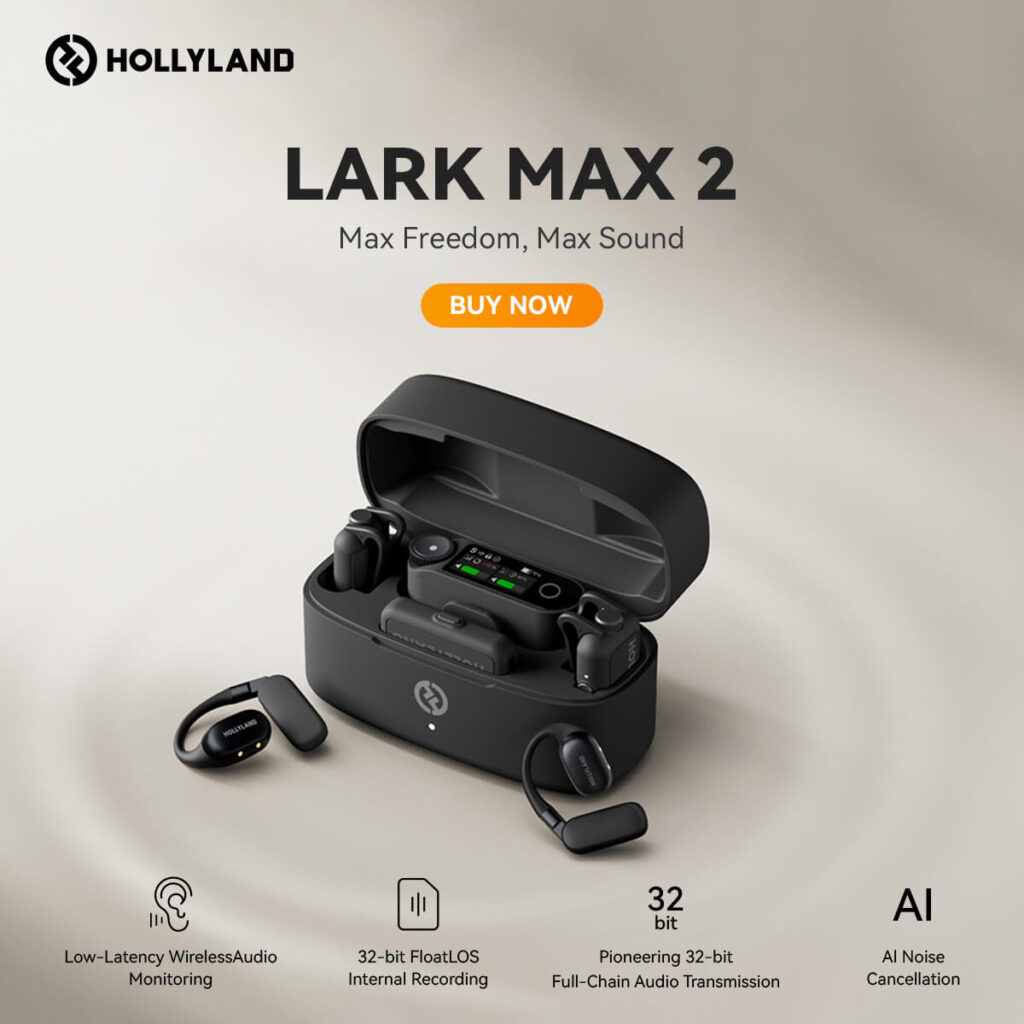Are you looking to capture crystal-clear vocals using your iPhone? Whether you’re a singer, podcaster, or video creator, the right microphone can make all the difference. With so many options on the market, it can be overwhelming to find the one that suits your needs. That’s why we’ve put together a list of the best iPhone microphones specifically designed for vocal recording. We’ve considered sound quality, portability, and user-friendliness to help you find your perfect audio companion. So, let’s dive into the world of mobile recording and discover the microphone that will elevate your vocal tracks to professional heights!
Selecting the best iPhone microphone for vocals can truly elevate your audio recording experience. To ensure you make an informed decision, it’s crucial to consider the following criteria:
- Sound Quality: The fidelity of the recording is paramount. Look for microphones with a wide frequency response and high sensitivity, which will capture the full range and nuances of the vocals.
- Compatibility: The microphone should readily connect with your iPhone, either via the lightning port or wirelessly through Bluetooth, without needing additional adapters.
- Portability: If you plan to record on the go, a compact and lightweight microphone is ideal. It should be easy to carry without compromising on audio quality.
- Ease of Use: A good microphone for non-tech users should be plug-and-play, with minimal setup required, allowing you to focus on the performance rather than technical details.
- Durability: The microphone should be robust enough to handle the rigors of travel and repeated use.
- Additional Features: Some microphones come with extra functions such as headphone monitoring, onboard control for gain, and noise-cancellation, which can be beneficial for professional-quality recordings.
By thoroughly assessing these aspects, you can select the best iPhone microphone for capturing stellar vocal performances.
| Feature / Product | Shure MV88 | Apogee MiC Plus | Rode VideoMic Me-L | IK Multimedia iRig Mic HD 2 | Sennheiser MKE 200 Mobile Kit |
|---|---|---|---|---|---|
| Approx. Price (USD)* | $149 | $259 | $79 | $129 | $99.95 |
| Microphone Type | Condenser | Condenser | Condenser | Condenser | Condenser |
| Polar Pattern | Multiple | Cardioid | Cardioid | Cardioid | Cardioid |
| Frequency Response | 20 Hz to 20 kHz | 20 Hz to 20 kHz | 100 Hz to 20 kHz | 20 Hz to 20 kHz | 40 Hz to 20 kHz |
| Connectivity | Lightning | USB, Lightning | Lightning | USB, Lightning | TRS jack, TRRS output |
| Sampling Rate | 24 bit/48 kHz | 24 bit/96 kHz | 24 bit/48 kHz | 24 bit/96 kHz | N/A |
| Adjustable Gain | Yes | Yes | No | Yes | No |
| Headphone Output for Monitoring | No | Yes | No | Yes | No |
| Included Accessories | Windscreen, Case | Tripod, carrying case | Furry windscreen | Carrying pouch, clip, windscreen | MKE 200 microphone, Mobile Pouch, 3.5mm Coiled Cable, 2x TRS clips, HotShoe Mount, Windscreen |
*Prices are approximate and as of the latest available data.
When comparing these microphones, consider what’s most important for your specific vocal recording needs. For instance, if the recording environment is noisy, a microphone with a cardioid polar pattern and the ability to adjust the gain might be more beneficial. If audio fidelity is paramount, then sampling rate might weigh more heavily in your decision. Always remember that usability and the features you value most should guide your choice.
Shure MV88 Portable iOS Microphone
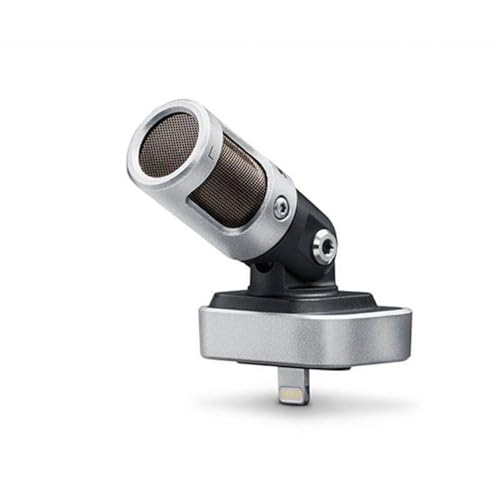
Brief Intro:
The Shure MV88 is a compact, easy-to-use microphone designed specifically for Apple’s iPhone and iPad devices. This microphone is particularly well-suited for vocalists, podcasters, and anyone looking to capture high-quality audio on the go.
Overview:
Upon testing the Shure MV88, I was immediately struck by its robust build quality and the versatility it offers. This microphone plugs directly into the Lightning port on an iPhone, making it remarkably portable without the need for additional cables or power sources. It features a hinged, rotatable design, allowing you to angle the mic for better sound capture.
The sound quality is excellent—clear, detailed, and with a rich tone that enhances vocal recordings. I found the companion ShurePlus MOTIV app to be intuitive, providing real-time adjustments to gain, EQ, and a selection of preset modes that tailor the audio capture for specific scenarios, such as music, speech, or loud environments.
Specs:
- Cardioid polar pattern
- Adjustable hinge with rotation
- Frequency response: 20 Hz to 20 kHz
- 24-bit/48 kHz recording quality
- 5 DSP preset modes
- Built-in headphone output for real-time monitoring
- ShurePlus MOTIV mobile app for enhanced recording control
Pros:
- Superb audio quality
- Highly portable and easy to connect
- Adjustable mic positioning
- Real-time headphone monitoring
- Handy companion app with great functionality
Cons:
- Attracts fingerprints due to its metallic finish
- Limited to Lightning connector; not ideal if you need universal compatibility
- The high-quality recording may create large file sizes
Price:
As of my last check, the Shure MV88 retails for approximately $149. This price point positions it as a premium choice, which is reasonable considering its performance and the trust associated with the Shure brand. For serious vocalists or audio enthusiasts looking to record with their iPhone, the MV88 represents a solid investment that justifies its cost with professional-grade results.
Apogee MiC Plus
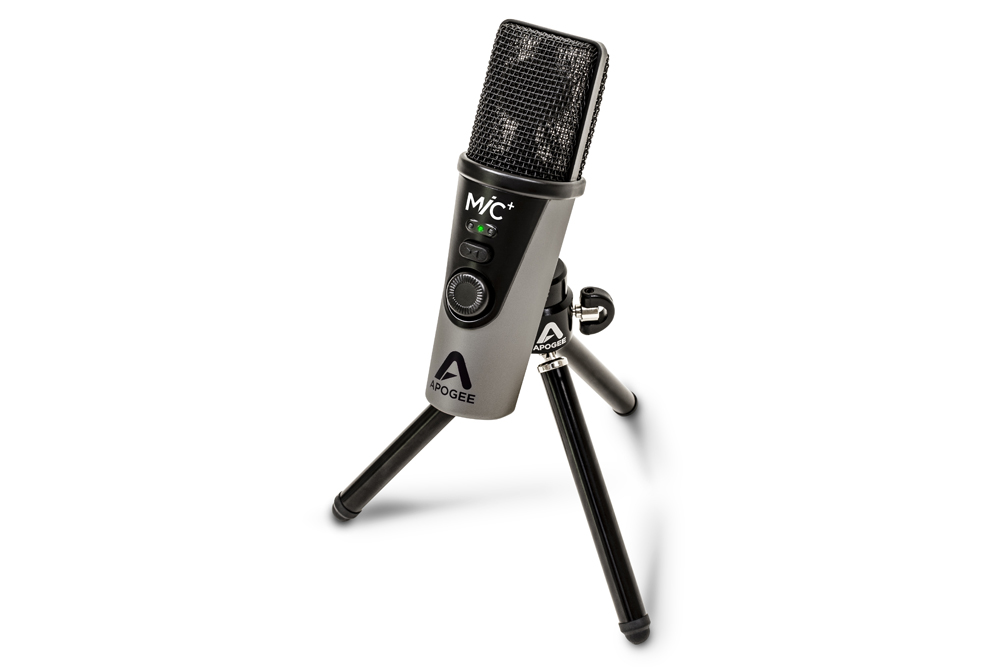
Overview
The Apogee MiC Plus is a high-quality, professional-grade microphone that distinguishes itself through simplicity and portability. As someone who values crisp, clear vocal recording, I find that the Apogee MiC Plus stands out for its plug-and-play ease and studio-quality sound. I’m impressed by how it captures every nuance of vocal performances, delivering a warm, rich tone that rivals much bulkier studio microphones.
Using the MiC Plus is refreshingly intuitive, even for those who might feel out of their depth with more complicated setups. It comes with a tripod, making it convenient to position during sessions. The blend feature for no-latency monitoring is particularly useful when trying to strike the perfect balance between the live input and the backing track.
The robust build quality is immediately apparent, giving me confidence that it’s a piece of equipment that will last, but it’s the fidelity of the sound that really sets the MiC Plus apart. It retains the natural character of the voice, which is essential for a pure and authentic recording. Whether you’re a musician laying down some vocals or a podcaster looking for clarity and depth in your episodes, the MiC Plus is a solid choice.
Specs
- Microphone Type: Condenser
- Polar Pattern: Cardioid
- Frequency Response: 20Hz – 20kHz
- Resolution & Sample Rate: 24-bit/96kHz
- Connectivity: USB and Lightning for direct connection to iPhone or iPad
- Controls: Input gain and headphone volume
Pros:
- Superb sound quality that offers a richness and clarity which elevates vocal recordings.
- Extremely portable and light, making it a breeze to carry around for on-the-go recordings.
- Plug-and-play connectivity reduces setup complexity, which is great for those who are not technically inclined.
- The build quality feels sturdy, adding to the premium experience you expect from a higher-end microphone.
Cons:
- The MiC Plus comes at a premium price, which might be a little steep for hobbyists or those on a budget.
- It might lack some of the additional features or multiple pattern options that other microphones offer.
Price
The Apogee MiC Plus typically retails around $259. While this may not be the cheapest option on the market, I believe that you’re paying for a microphone that delivers professional studio-quality recordings, which is a worthwhile investment for those serious about their vocal work. The MiC Plus isn’t just a microphone; it’s a portable, all-in-one solution for artists who don’t want to compromise on sound quality, even when they’re away from the studio.
Rode VideoMic Me-L
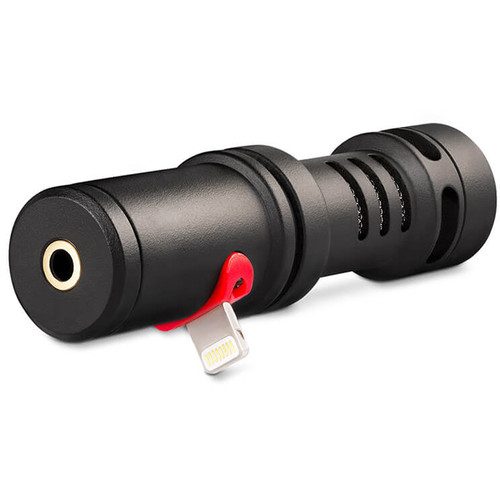
Overview:
The Rode VideoMic Me-L is a high-caliber microphone specifically tailored for iPhone users looking to capture crystal-clear vocals. Its compact and user-friendly design allows me to recommend it for vloggers, musicians, and podcasters who are frequently on the go. Upon testing, the first thing I noticed was the stark improvement in audio quality compared to the iPhone’s built-in mic. The VideoMic Me-L plugs in directly via the Lightning connector, which means setup is a breeze and you’re assured of a digital signal path for the purest sound.
Moreover, the included furry windshield is invaluable for outdoor recording environments. The wind is notorious for ruining vocal takes, but this mic handles it like a champ. The directionality also impressed me; it picks up sound from the front very effectively, which effectively minimizes the ambient noise.
Specs:
- Acoustic Principle: Pressure gradient electret condenser
- Polar Pattern: Cardioid
- Frequency Range: 20Hz – 20kHz
- Signal to Noise Ratio: 74.5 dB
- Connection: Lightning connector
Pros:
- Plug-and-play convenience with no need for batteries or charging.
- Excellent directional cardioid polar pattern that reduces background noise.
- Robust metal body that feels durable and should withstand regular use.
- The windshield is ideal for reducing unwanted wind noise when recording outdoors.
Cons:
- It’s a bit bulky when connected to an iPhone, which could be a downside for those prioritizing portability.
- The fixed Lightning connector means it can’t be used with iPhone models that lack this input without an adapter.
- The focus on directivity means it might not be the best choice for recording many voices or sounds from multiple directions simultaneously.
Price:
I found the Rode VideoMic Me-L typically priced around $79 to $99. It’s not the cheapest option available, but considering the audio quality and the build, it’s a value-packed product for those serious about their iPhone audio recordings.
In conclusion, if you’re in the market for a significant upgrade over your iPhone’s internal microphone, especially for vocals, the Rode VideoMic Me-L should definitely be on your shortlist. Its ability to capture clear, directed sound and its straightforward usage make it a smart investment for mobile content creators.
IK Multimedia iRig Mic HD 2
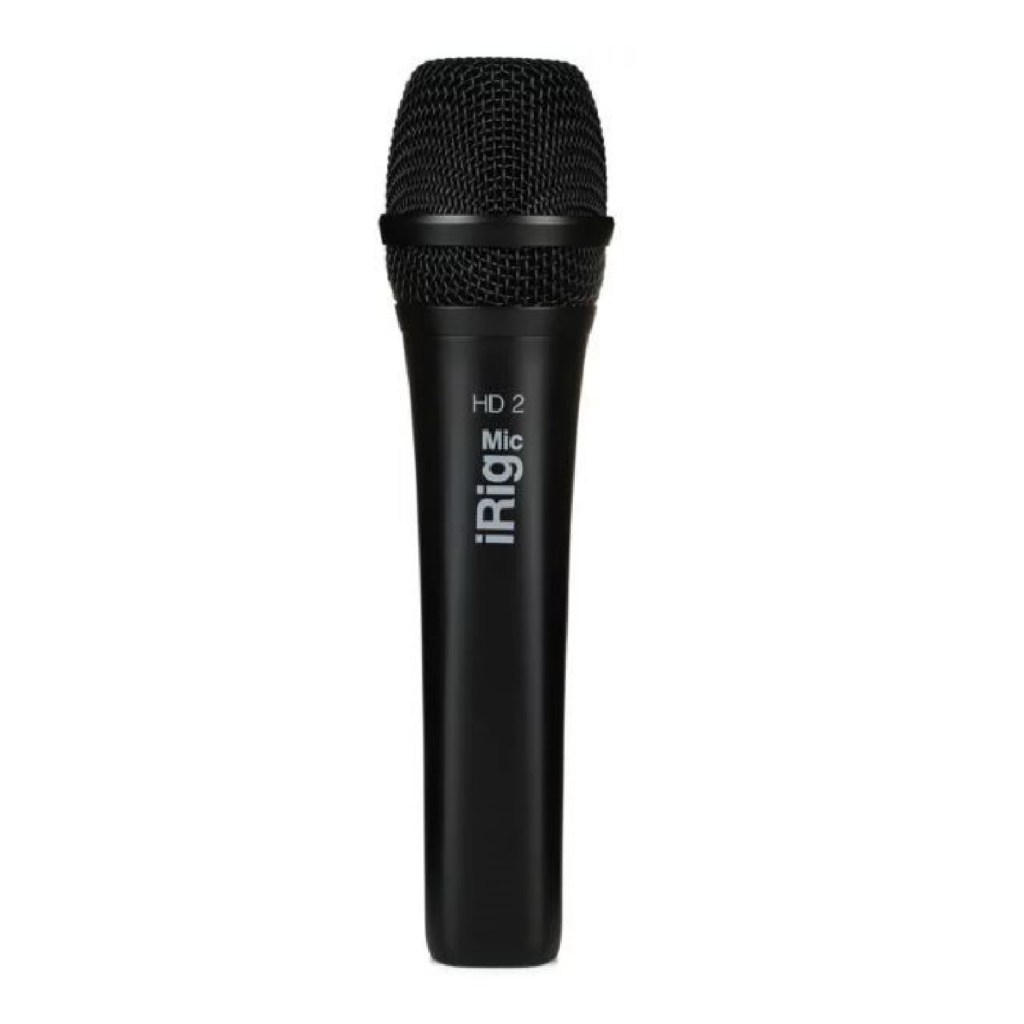
Overview:
The IK Multimedia iRig Mic HD 2 is a standout choice for anyone looking to record high-quality vocals directly onto their iPhone. It’s a sleek, handheld digital condenser microphone that offers professional-level audio recording capabilities. From my experience, what sets the iRig Mic HD 2 apart is its impressive clarity and detail in vocal recordings, making it ideal for podcasters, musicians, and content creators alike.
The microphone’s ease of use is one of its most appealing features for iPhone users. With the included Lightning cable, it’s literally plug-and-play, removing the need for any complex setup. IK Multimedia ensured this microphone isn’t just user-friendly but also versatile. It comes with a variety of mounting options, which can be incredibly handy when you’re looking to record in different environments or when you’re on the move.
Specs:
- Digital condenser microphone
- 24-bit, 96 kHz digital audio resolution
- Cardioid pickup pattern
- Low-noise, high-definition preamp
Pros:
- Superb audio quality with a clear focus on the main sound source thanks to the cardioid pattern.
- High-resolution recording capabilities—pristine audio that’s comparable to studio equipment.
- Simple connectivity through the Lightning port is a major win for iPhone users. No need for adapters or complex setups.
- The build quality deserves a mention. It’s both durable and ergonomically designed, making it a pleasure to use over longer sessions.
- Versatility in use cases, whether you’re indoors or out on the field, the iRig Mic HD 2 adapts well.
Cons:
- Given the professional features, the price point might be a barrier for casual users or hobbyists.
- Requires downloading IK Multimedia’s apps for access to certain features, which may not sit well with those looking for a more straightforward, app-independent experience.
- The focus on portability means it’s missing some of the bells and whistles of larger, more studio-oriented microphones, which might be a limitation for advanced users.
Price:
As for the price, expect to invest in the ballpark of $100-150 for the iRig Mic HD 2. It’s definitely not the cheapest option out there, but considering the blend of portability, convenience, and quality, it’s well worth the price for serious users.
In my opinion, the iRig Mic HD 2 truly shines for vocalists and audio professionals looking for a portable, high-quality microphone solution. Its limitations are mostly relevant for those who might require more robust features typically found in a full studio setup. However, for iPhone users on the go, or for setting up a streamlined digital recording station at home, the iRig Mic HD 2 is undoubtedly a top contender.
Sennheiser MKE 200 Mobile Kit
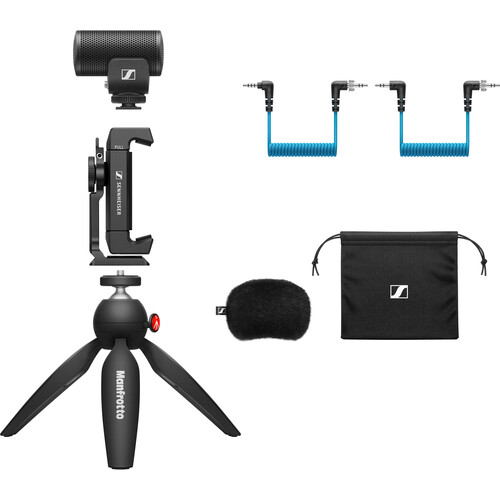
Brief Intro
The Sennheiser MKE 200 Mobile Kit is an all-in-one microphone solution designed to enhance audio quality for iPhone videographers, vloggers, and anyone needing to capture great vocals on the go. It boasts Sennheiser’s reputation for audio excellence, promising to deliver clear, crisp sound for your projects.
Overview
Having tested the Sennheiser MKE 200 Mobile Kit extensively, I can confidently say it’s a game-changer for mobile recording. Straight out of the box, you get a feeling of quality with its compact and sturdy build, which is crucial when you’re recording in dynamic environments. It couldn’t be simpler to use: plug it into your iPhone, and you’re ready to capture superior audio.
In my experience, the directional microphone does an exceptional job at focusing on the sound you want while minimizing background noise. This is particularly useful if you’re recording vocals in less-than-ideal conditions. Additionally, the included windscreen is a boon for outdoor recording, saving you from the frustrations of wind interference that so often ruin takes.
Specs
- Directional microphone designed for superior vocal capture
- Compact design for easy handling and transportation
- Integrated windscreen to reduce unwanted background noise
- Standard cold shoe mount for attaching to a variety of devices
- Two cables included: TRS for cameras and TRRS for mobile devices
- Furry windshield for outdoor use
Pros:
- Excellent vocal clarity, capturing the nuance in performances
- Durable and well-constructed, you don’t worry about it in your gear bag
- Incredibly user-friendly, plug-and-play without needing extra apps or batteries
- Versatility in mounting and cable options, making it adaptable to several use cases
Cons:
- The non-detachable cable system could be limiting if you prefer various lengths or replacements
- Although better than most in its class, the sound might still need post-processing for professional results
Price
As of my last check, the Sennheiser MKE 200 Mobile Kit is reasonably priced, especially given its high-quality performance and brand reputation. Assuming you’re getting professional-grade audio, it’s an investment worth considering for anyone serious about mobile audio recording.
In conclusion, the Sennheiser MKE 200 stands out as a robust and reliable microphone that punches above its weight, especially in the world of mobile recording. It’s an investment that can significantly uplift the production value of your vocal recordings on an iPhone.
Conclusion
In sum, choosing the best iPhone microphone for vocals comes down to your needs for sound quality, convenience, and budget. Whether you’re an aspiring musician, podcaster, or just love to record high-quality vocals on the go, there is a mic out there that suits your requirements. From the clarity of the Shure MV88 to the portability and ease of use of the Rode VideoMic Me-L, there’s no shortage of great options. Prioritize what’s most important for your vocal recordings and you’ll find the perfect tool to capture your voice in all its natural richness and detail.
While handheld mics are great, a wireless lavalier microphone gives singers exceptional freedom during vocal recordings and performances. A reliable lavalier mic ensures crystal-clear vocals, perfect for capturing professional-quality audio directly on your iPhone.
Best Seller
Sale
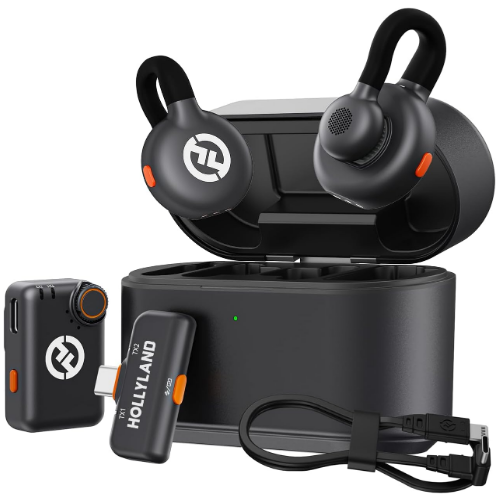
Hollyland LARK M2S – Wireless Clip-on Microphone
- 7g Lightweight, Titanium Clip, Discreet Design
- Clear sound with 24-bit/48kHz, 70dB SNR, 116dB SPL
- Noise Cancellation & 300m Long-Range Stability
- Works with Camera/iPhone/Android/Laptop
- Perfect for Content Creators, Online-Teaching, Streaming
$139
$159
FAQs
Q: Do I really need an external microphone for my iPhone if I just want to record vocals for social media?
A: While your iPhone’s built-in microphone can capture sound, an external microphone is specifically designed to provide better sound quality, reduce background noise, and give your vocals that professional touch, even if you’re only sharing them on social media.
Q: Can I use these iPhone microphones with other recording devices?
A: Some iPhone microphones come with adapters or have compatibility features that allow you to use them with other devices, but generally, they are optimized for use with iOS devices. Check the specifications of each microphone for its compatibility options.
Q: How do I know if a microphone will be compatible with my iPhone model?
A: Look for the connector type (Lightning, USB-C, or 3.5mm jack) and compatibility information in the product’s description. Since iPhone models vary, ensure that the microphone you choose matches the port available on your iPhone or consider whether you’ll need an adapter.





























.png)



